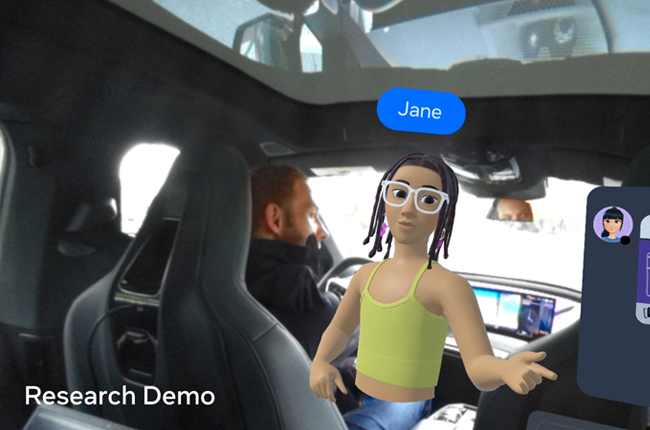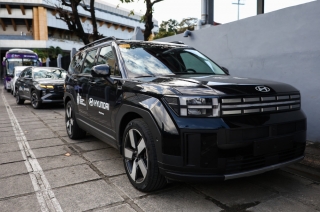
Virtual reality and cars don’t mix, but BMW and social media conglomerate Meta are investing time, money, and effort to change that. For nearly a decade now, BMW has dedicated its efforts to seamlessly incorporating virtual reality into its vehicles. Unfortunately for BMW, they have hit wall after wall in development until recently due to the challenges posed by the interaction between VR devices and the car's dynamic movements, as well as the visual consistency within its interior. Fortunately, BMW is making considerable progress with the assistance of Meta, marking a significant breakthrough in the integration of VR technology.
In a collaborative effort, Meta and BMW have developed a proof of concept virtual reality (VR) headset capable of distinguishing between the activities occurring within the car and the world outside of the car’s cabin surrounding it.
“It is too early to tell exactly how or when this technology will make it into customers’ hands, but we envision a number of potential use cases for XR devices in vehicles — from assisting the driver in locating their car in a crowded parking lot to alerting them to hazards on the road and surfacing important information about the vehicle’s condition. The implications of future AR glasses and VR devices — for passengers as well as drivers — are promising.
The proof-of-concept prototype showcases a comprehensive range of movements within the vehicle, referred to as six degrees of freedom, along with an extended reality (XR) experience. This innovative system seamlessly combines two crucial calculations: determining the headset's position relative to the car and tracking the car's movement in relation to the external world.
In order to address the disconnect between what the camera sees and what the VR headset senses, BMW devised a solution by connecting a test vehicle's sensors to the tracking system of a Meta Quest Pro headset. BMW’s headset-to-vehicle integration enables the system to accurately determine the device's position in relation to the car, as well as the car's movement in relation to the surrounding environment. By combining these data points, BMW has successfully resolved the issue of alignment between the camera's observations and the VR headset's interpretation.

So what does this mean exactly for the future of motoring? Aside from situations that BMW pointed out like hazard recognition and displaying information about your vehicle’s conditions in real life, we’re at a loss on the other potential uses of VR in a car. Fortunately for us, the smart people over at BMW and Meta will continue to delve deeper into VR applications in cars.
Latest News
-
Geely’s EX2 EV headed to Australia — is a Philippine launch possible? / News
The Geely EX2 is confirmed to go on sale in Australia in 2026. Could a launch in the Philippines also be on the cards?
-
Hyundai Motor Philippines is the FIFA Futsal Women's Teams' official mobility partner / News
Hyundai Motor Philippines strengthened its partnership with FIFA through its support of the FIFA Futsal Women's Teams.
-
Kia Philippines backs EJ Obiena as Atletang Ayala continues championing Filipino athletes / News
Kia Philippines strengthens its support for EJ Obiena, backing the Olympian with dedicated mobility at home and abroad.
Popular Articles
-
Electric Vehicles in the Philippines for under P1 million
Jerome Tresvalles · Aug 19, 2025
-
Top 3 Cars For Every Lifestyle—What Cars Are Right For You? | Behind a Desk
Caco Tirona · Apr 24, 2024
-
5 Tips to Maximize Fuel Efficiency
Jerome Tresvalles · Sep 09, 2024
-
Five driving habits that are draining your fuel tank
Jerome Tresvalles · Jun 24, 2025
-
Can engine braking harm your engine?
Jerome Tresvalles · Sep 11, 2025
-
Do electric cars even need maintenance?
Jerome Tresvalles · Oct 23, 2024
-
Best vehicles for an active outdoor lifestyle
Shaynah Miranda · Jul 25, 2024
-
How to drive different types of vehicle transmissions
May 23, 2024
-
5 easy ways to keep your car interior clean
Allysa Mae Zulueta · Nov 15, 2021
-
How to survive Metro Manila traffic
Earl Lee · Aug 16, 2022










